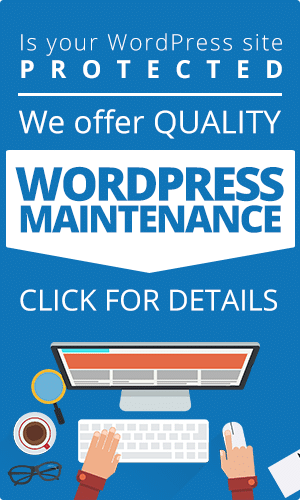Discover easy website design tips that will make you stand apart from your competitors today.
Starting your own small business can be an exciting venture. But with this new challenge comes a wide-ranging set of issues you may have never considered before. One common grievance small business owners have is making an effective website that is useful to users as well as drives customers to your service or product. Yet, many starting out have little, if any, knowledge when it comes to website useability and design. In fact, owners tend to hire this work out altogether. This can be an effective way to handle this, but website designers do not fully understand the core of your business. So, a designer may be able to provide a flashy video with animated text, but is it useful to your readers and customers? Therefore, understanding some basic website design tips for small business can work wonders for your business. The more engaging and solution-focused your site is, the better results you will see. Therefore, we put together 12 essential website design tips to increase customer engagement and grow your bottom line!
Think Like a Customer
The first step in any design practice is to get in the mind of your customer. What are they looking for specifically? What questions do customers usually have that you could answer for them quickly? Or what are some common barriers customers must buy your product or service? Getting this information organized and into an easily accessible area of your site is a critical step in enhancing the useability of your website. Here are some questions and prompts you can ask yourself to get started today.
- What common questions do customers ask?
- What services or products contribute the MOST to your bottom line?
- Does your sales cycle ebb and flow with seasons? Or is it consistent year-round?
- Does your customer base typically use the internet to find services? Although websites are everywhere, some older individuals still feel uncomfortable with it. If this is the case, I would not worry about spending too much money on a flashy site!
Asking these types of questions about your customer base will help shape the overall design of your site. The key is to keep it simple and customer and solution focused.
2) Site Speed is Critical to Website Design
Have you ever searched on Google to find an article headline that matches perfectly to what you are searching for? Only to find that the page will not load or is incredibly slow? I bet you moved on from the page without thinking twice. In the digital age, everything moves FAST. Therefore, prioritizing site speed is a must when considering website design tips for a small business. Do not give your potential customers a reason to leave before they have seen any of your products or services. Here is what you can do to boost site speed.
- Keep the design simple. Including excessive videos, images and stylistic formatting can wreak havoc on your site’s speed. What is worse is many website owners do not have the hosting power to effectively manage these resources. Therefore, we recommend a simple design layout that can be found with many out of the box themes and website builders for cheap.
- Utilize site speed resources. Google includes a page speed index that provides a report of your site’s speed and what is slowing down. Although some of the information provided can get confusing, some simple changes recommended by Google can make huge differences in speed. Another site speed tool that is free is GTMetrix. Operating in much the same way, this is a great tool to diagnose speed issues quickly.
- Prioritize a good image optimizer and caching resource. You do not have to know all the ins and outs of image optimization and page caching to get the benefits of it. The good news is WordPress plugins and other software are made specifically to make your site blazingly fast. Our favorite WordPress plugin for this is WordPress Rocket. Although, many products exist today so pick one that makes the most sense for you!
3) Avoid Misuse of Post Sliders and Carousels
Much like too many videos and images, resource intensive operations such as post carousels and sliders can be a big culprit in slow site speed. What is worse, these elements usually make the functionality of the site worse and less intuitive. We recommend staying away from these altogether unless necessary. Here are 3 common reasons we avoid sliders at all costs.
- They have super low engagement rates. Engagement studies found that sliders demanded less than a 1 percent slide through rate. What does this really mean? It means 99% of viewers ignored or skipped the slider altogether.
- They tend to work poorly on mobile devices. Most internet searches are transferring from computers and tablets to mobile phones. This makes sense given the landscape of our world now, but with small screens, sliders are exceedingly difficult to use. This can cause frustrating user experience. It may cause customers to leave your site altogether.
- They can be confusing and distracting. Remember, the key to website design is keeping it as simple as possible. A slider with multiple images and services flashing carousel style on someone’s screen can be overwhelming and confusing for your customers.
4) The Paradox of Customer Choice
One of the biggest mistakes small business owners make when it comes to website design is making their product or service too complicated. This includes too many variations and options for the customer to consider. For example, consider this study which shines light on something called Hick’s Law. Essentially, this study found that when customers are faced with less choice variation between products, the more likely they are to buy. The psychology lies within information overload for your customer. This study found that customers exposed to 24 different flavors of jam only bought jam at a 3% rate. However, 30% of customers bought jam when exposed to just 6 jam variations or less. So, how can you determine if your website design has included too many variations? Ask yourself these simple questions to help determine if you have too many solutions for your customers.
- Identify the main problem your company solves for customers. Do you have too many solutions for this problem?
- Do you receive any feedback that your checkout process is too confusing?
5) Answer this question for your users. “Am I in the right place?”
The first question most individuals ask (even subconsciously) when searching for something is if they have really found what they are looking for. Understanding this gives you a big leg up on your competition if you leverage this information. How can you do this? Create a concise description of who your company is and what solutions it provides. Keep this simple and all encompassing. And this should be highly visible as soon as your website page loads. Providing this gives your customers excellent useability to break down any barriers right off the bat. Provide value quickly and the more likely your potential customers will stay on your small businesses’ site.
Next on out list of critical website design tips for small businesses is to focus on the overall structure of your site and navigability. Keeping your navigation simple falls in line with other design tips. Having a long menu of categories and subcategories can create confusion for the customer, much like having too many solutions. When in doubt, keep your website navigation design as simple as possible. Typically, small business owners can expect to have these common website pages.
- Homepage
- About Page
- Services/Products Page
- Contact
- Privacy Policy/Terms & Conditions
7) Easy to Read Written Content Wins
Keeping with the simplistic style theme of this article, the same goes for written content. You may want to cram as much as possible, boasting of all the benefits your product or service offers. But it is better to resist this urge and keep your written content as easy to read and simplistic as possible. Make sure your potential customers do not have to guess what your product does, or it is so descriptive they lose interest. To help guide you if you have not written this content yet, here is a question to ask: What would you want to read to get you to buy the product or service? Make sure this answer is easily understood and conveyed to potential customers. Keep prose on point and written in short paragraphs. This has been proven to increase reader engagement, keeping them on your site longer!
8) Do Include a Call-To-Action
Do not forget to include a call-to-action on your homepage! It may seem counterintuitive, but it is important to tell your customers exactly what action you would like them to take once they find your website. A good call-to-action can be as simple as a ‘buy now’ for a product or service. Consider what benefit your customer would get if they take this action. This will help craft a CTA that works for your business. If you need extra guidance, a quick Google search for best CTA’s will get your creative mind flowing.
Website Design Tips for Small Business Wrap Up
Website design can seem like a daunting task if you are focused on trying to keep your business running! But, with a few tweaks and website design tips you can create a site that provides massive value for your customers. And in turn will increase your bottom line. Thus, use these 8 tips to keep your site an informative and simple resource your customers can rely on to get the answers they need.
Need help with your next website design? Checkout our WordPress website design sevices, and give us a call. We’d be honored to partner with you!






